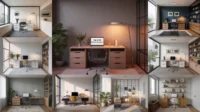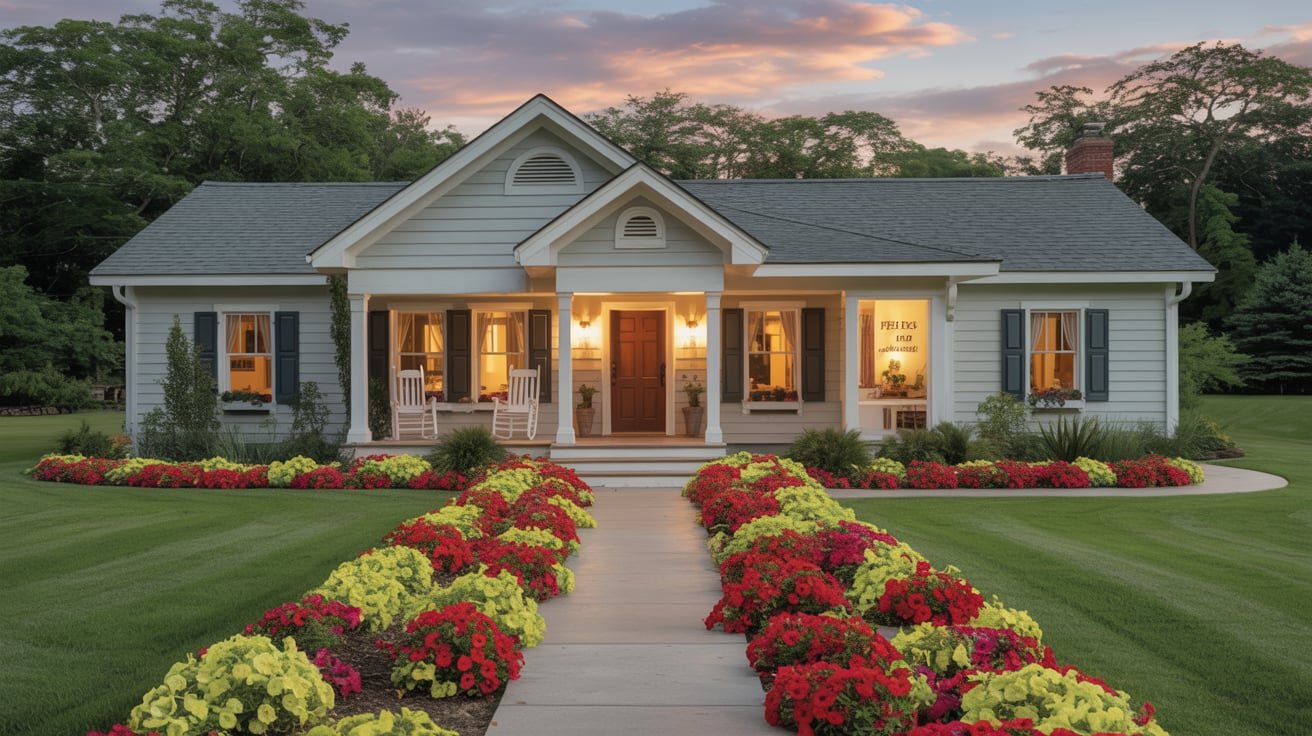Ultimate Home Vinyl Sound Room Designs
Published: 27 Feb 2025
The ultimate goal of any audiophile is to create the ideal home vinyl sound room tailor-made for their vinyl collection. Designing a space in your house into a sound room can greatly enhance the listening experience by amplifying the depth of the vinyl. Moreover, this guide manages to cover factors and advice that need to be taken into account when designing a vinyl sound room.
Understanding the Importance of Room Acoustics
For instance, sound waves bouncing between two parallel walls would create standing waves which would lead to poor audio quality. The use of diffusers and absorbers can aid in these factors ensuring better sound quality.
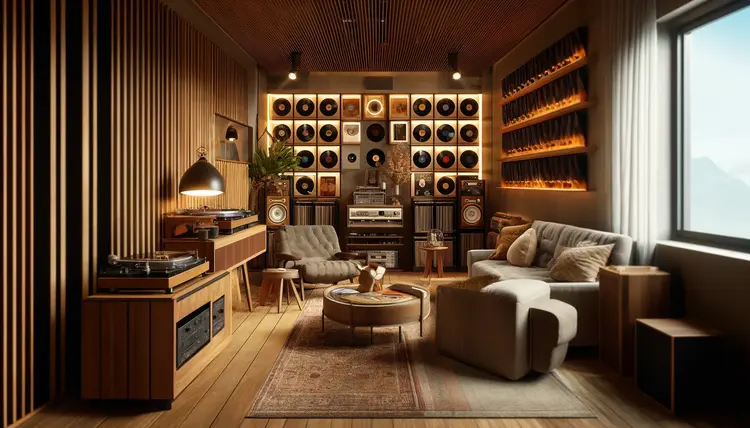
Selecting the Right Room
One of the more important decisions is the selection of the room that will act as a sound room. Ideally, a rectangular room without parallel walls would be better. Moreover, avoid using rooms with a lot of glass as they tend to reflect the sound instead of absorbing it. Sound rooms usually need heavy carpets and thick curtains, and basements provide the perfect environment to optimize acoustics.
Soundproofing Methods
Soundproofing is very self-explanatory as it seeks to avoid hindrance or communication by external noises. This requires fitting in insulation or sealing in gaps on the wall or both the ceilings and the windows. Barriers consisting of mass loaded vinyl can also be fitted to the walls in order to avoid transmission of sound. Also, all the floors which are floating can avoid some vibrations by making the room separate from the building.
Sound Floor Options
The type of materials used on the floor can greatly affect the sounds which are reflected or even absorbed. If hardwood is used as the floor, it is likely to improve the bass response, though too much may be a bad thing. On the contrary, carpets are able to absorb sound which may possibly help out, but at the same time weaken the high frequencies. However, equally combining both may find a solution as it encourages rugs to be put on wooden floors.
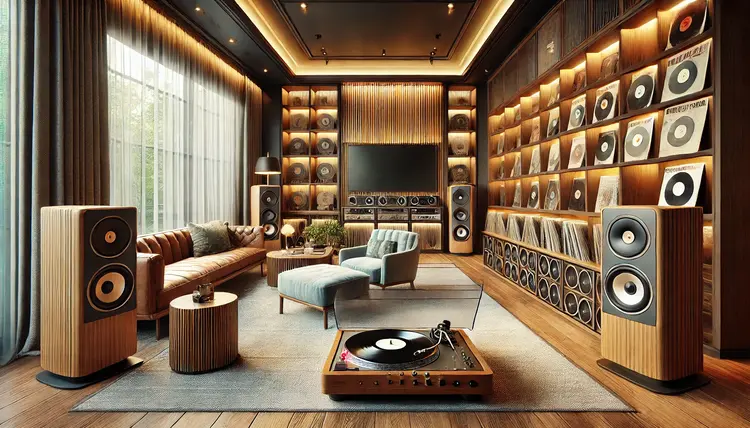
Wall Treatments
In order to control how sound is reflected off walls, they should not remain untreated. Moderately foamed acoustic panels or even fiberglass work well as absorbent materials covering high mid frequencies to quiet ranges. Low-frequency problems can be solved by some of the bass traps which have been positioned in corners. Blending and filling bookshelves with books not only confuses but also serves as diffusers while scattering sound waves used with flutter echoes.
Ceiling Treatment
Sound being reflected by the ceiling back in a room will cause some phase issues. This problem can be solved by placing out some acoustic tiles or even panels. With the help of a slanted ceiling added in areas with higher ceilings, the ceiling’s acoustic performance is said to be stronger and the movement of sound waves is dominant.
Design Idea | Key Features | Benefits |
Bungalow Craftsman | Single-story, open floor plan, front porch | Cozy, efficient layout, great for small families or retirees |
Two-Story Craftsman | Spacious upper floor with large bedrooms, expansive porch | Provides privacy, ideal for larger families or multi-generational living |
Modern Craftsman | Combination of traditional Craftsman elements with contemporary features | Updated design, blends traditional and modern styles |
Decor and Setting
The ambiance and decor of the setting should blend with the music and help in achieving the desired mood. Generally, warm soft lights are favored as they do not cause discomfort and also provide a warm feeling. Furthermore, the use of dimmable lights facilitates the changing of the setting in accordance with the requirements of the listener.
Furniture Arrangement
The place where furniture is arranged or located has a direct effect on the consideration of sound. The use of speakers should be at ear level and should form an equilateral triangle with the listener. The speakers should not be placed against walls, otherwise, the bass sound volume would be amplified. The shaking effect when a room is at the center should be avoided as well, hence the sitting area should be erected away from the center.
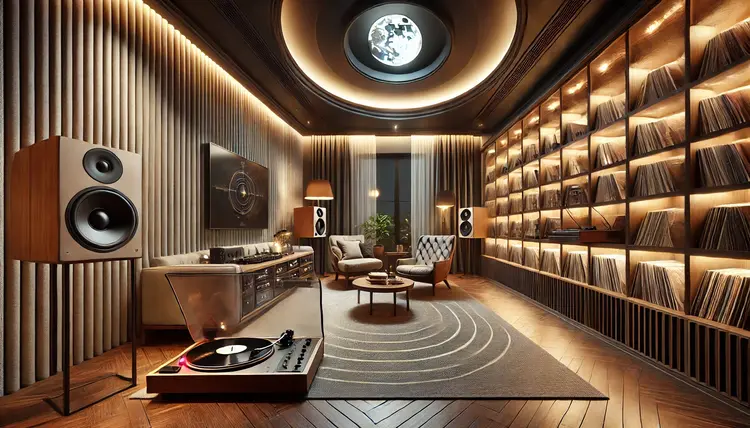
Electricity Supply Considerations
It is a basic rule to have a separate circuit for each and every electrical item and in this case, for audio devices, especially loudspeakers. This tends to reduce the possibilities of hums and even noise interference. Better facilities for power conditioning can also protect and greatly enhance sound output.
Climate Control
Keeping track of the Temperature and humidity is very crucial to protecting the equipment and optimizing the sound quality. If plants are exposed to extremes, both records and electronic parts can be easily damaged. Controlling the climate ensures that the machines work in an environment that is convenient, leading to the lengthening of their durability.
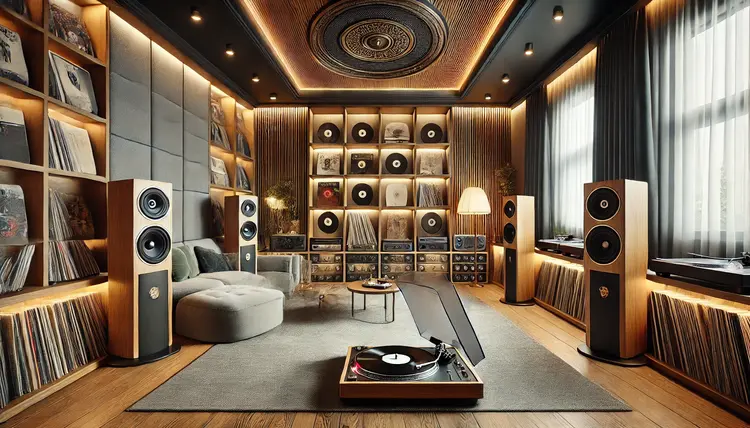
Budgeting and Planning
When choosing the room for the sound requirements, the metal targets should be planned for first, such as the polish finish, the decoration, and the advanced equipment for the room. Once equal amounts are taken from the second stage as the only building blocks are placed inside the room, these start taking those forms as well.
Maintenance and Upkeep
The longevity of the equipment as well as the room is guaranteed with the help of maintenance. It normalizes cleaning the acoustic panels, checking the equipment for any malfunctions, as well as normalizing the airflow.
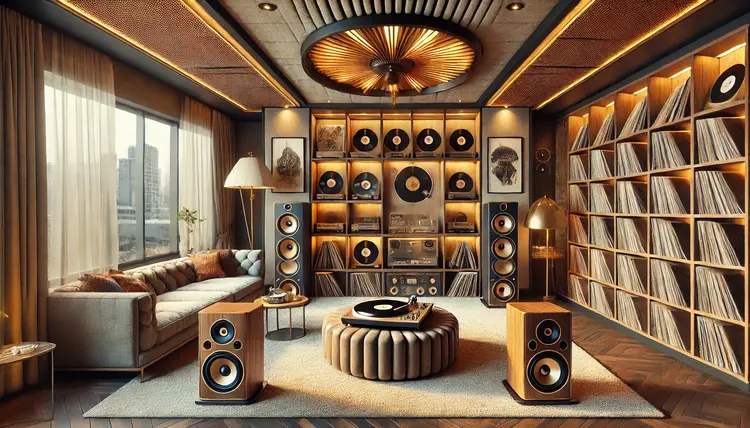
FAQs
What is the ideal room size for a vinyl sound room?
It has to be noted that this is an answer which lacks a yes or no definitive response, however, it is generally agreed upon that a room size of more than 12×15 is ideal. This enables the positioning of speakers and treatment to be easier.
Can I use my living room as a vinyl sound room?
Yes, after making the appropriate soundproofing and audio modifications, a majority of living rooms can be modified. However, it should be noted that specific purpose rooms tend to offer a better overall experience.
How can I reduce bass boominess in my room?
Bass can be implemented in bass traps in corners as well as the use of acoustic panels. They are rather annoying, am I right? Not to mention, pushing the speakers away from the walls enables for lesser exaggeration to bass.
Is professional help necessary for room acoustics?
While there are a number of solutions one can implement to do it oneself, getting an acoustician’s advice can help provide you with the best possible solution for the highest sound quality possible.
What is the best way to take care of my vinyl records to get the best sound potential?
The records stand & room must be maintained in vertical and dry positions so that the coolness is retained. Regularly clean the stylus and records to ensure that sound reproduction is not affected by any dust accumulation.
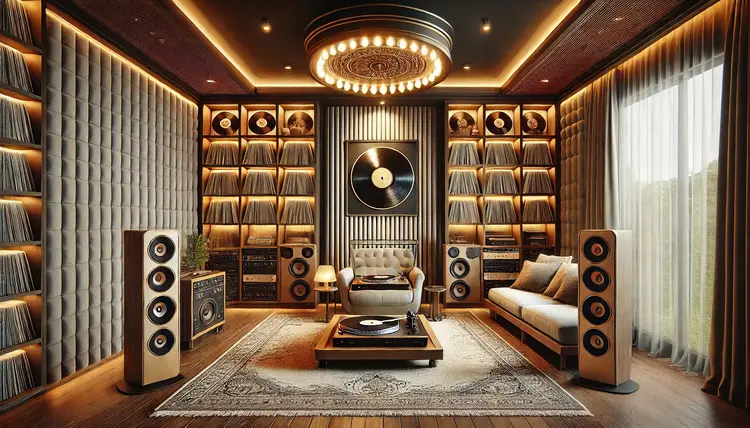
Conclusion
Constructing the perfect home vinyl sound room requires a lot of mixing of acoustics with the selection of the room and positioning of the equipment. With these factors planned properly, it is possible to make a space that can provide an all-enveloping and high-fidelity sound experience.

- Be Respectful
- Stay Relevant
- Stay Positive
- True Feedback
- Encourage Discussion
- Avoid Spamming
- No Fake News
- Don't Copy-Paste
- No Personal Attacks

- Be Respectful
- Stay Relevant
- Stay Positive
- True Feedback
- Encourage Discussion
- Avoid Spamming
- No Fake News
- Don't Copy-Paste
- No Personal Attacks


